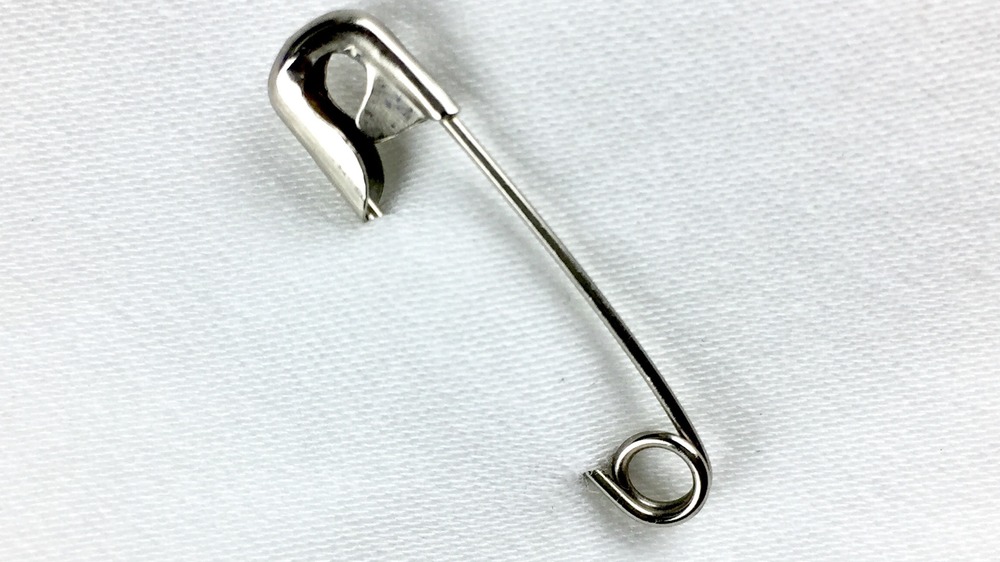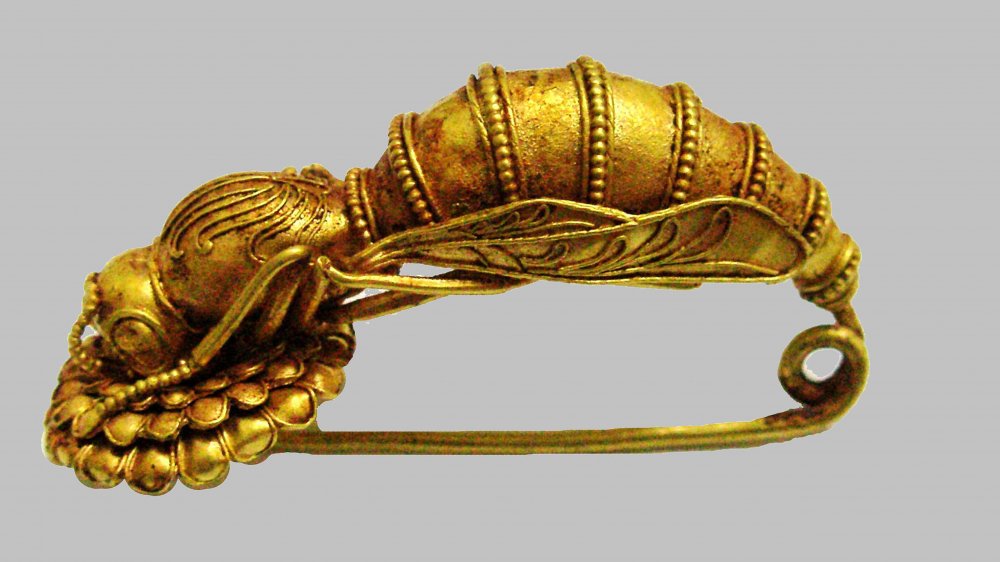How Ancient Is The Safety Pin?
The humble safety pin. It has been a companion to many a tailor and people whose shirts do not close all the way. The safety pin was even worn as a fashion accessory by punks. But the safety pin's history might date back a lot farther than you first thought.
The safety pin as we know it today was invented by Walter Hunt, per the U.S. Patent Office. On April 10, 1849, he received the patent for his invention of a pin with a wire coiled into a spring and a separate clasp at the other end. According to the National Inventors Hall of Fame, Hunt sold the rights to the patent because he needed to pay off a $15 debt. Even though he managed to pay his arrears, he didn't get rich off of his invention.
Hunt continued to invent after selling the safety pin patent. He's credited with creating America's first sewing machine as well, though the Patent Office said he decided not to patent his invention for fear of putting those who sewed for a living out of work. Hunt was a prolific inventor, writes ThoughtCo. He worked as a farmer, and his first few inventions had to do with making more efficient machinery. Hunt moved to New York City and filed his first patent when he moved there.
But while the modern safety pin only dates back to 1849, the idea of a hook to safely attach clothing has been around for far longer than that.
The ancient safety pin was more than a thing to close clothes
The very first pins for clothing showed up around the 14th century BCE. It was called a fibula (plural: fibulae) and was mostly used by the Mycenaeans. The Fashion Institute of Technology explained fibulae functioned like a clasp to fasten garments. It consisted of a sharp, pointed wire, a spring, and a closing mechanism very close to what a safety pin looks like today. But fibulae were much bigger than your standard safety pins.
While fibulae had a very practical function — keeping clothes together — they also served a very decorative purpose. The Fashion Institute of Technology said the metal parts of fibulae often featured elaborate ornamental features from beads made of amber or glass on the wires, coral buttons, and even bronze chains hanging down. The fibulae became a status symbol, a way for influential people in ancient Greece to express their wealth. It also allowed people to worship various gods and goddesses by imprinting the deities' images onto the pins. Forms of fibulae have been found among other cultures, noted Love to Know, including Byzantine, Anglo-Saxon, and Roman. North African nomadic groups also wore a type of fibulae.
The fibulae were known as an essential piece of clothing for women, though men also used them as well. Fibulae were integral if a woman was to wear a style of tunic called the Ionic chiton, where fabric is draped over shoulders and the upper arms.
Too bad today's safety pins aren't fancy
The use of fibulae declined as people moved to a more tailored form of tunics, and people relied on sewing the clothing. It's possible that Hunt saw a photo or a diagram of a fibula and drew his safety pin inspiration from it. Certainly, even the more decorative use of the safety pin is borrowed from its ancient cousin. When punk rockers and fashion designers of the 1970s and 1980s used overly large safety pins to decorate their clothes, they were really only doing the same thing the ancient Greeks had done.
The safety pins of today are definitely more utilitarian than the fibulae of old. You can buy several sizes of safety pins in different colors, though you'd be hard-pressed to find a safety pin decorated with an etching of the great goddess Athena these days; that's probably something Michael's just doesn't carry. Even so, modern versions of the more ornate fibulae do sometimes show up in fashion. The Fashion Institute of Technology pointed out fashion designers like Alberta Ferretti created their own versions to pin up a modern take on the Ionic chiton.
The next time you have to pin up a shirt that somehow gapes at the front, appreciate the humble safety pin — not just for keeping your clothing closed, but also for how truly ancient it is.


